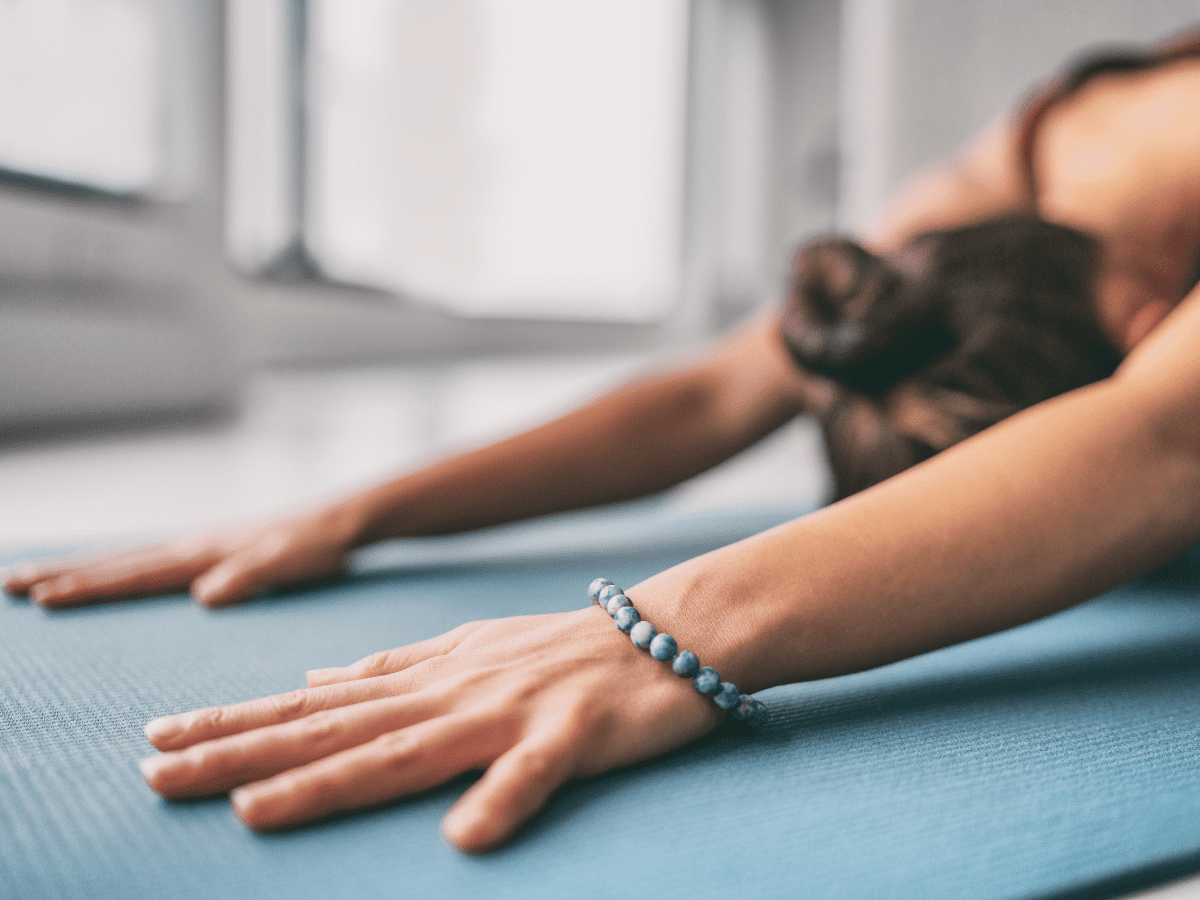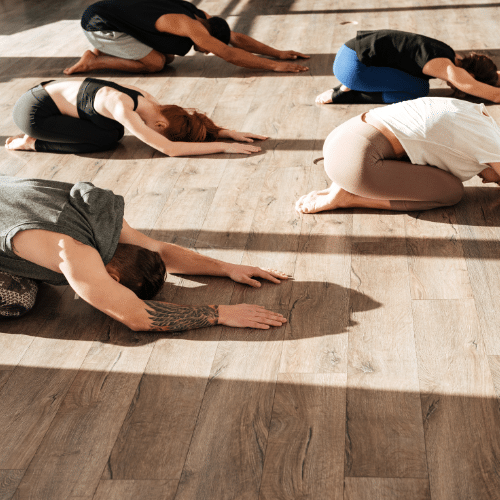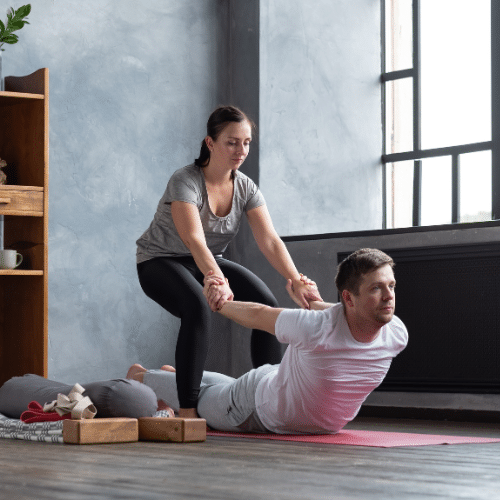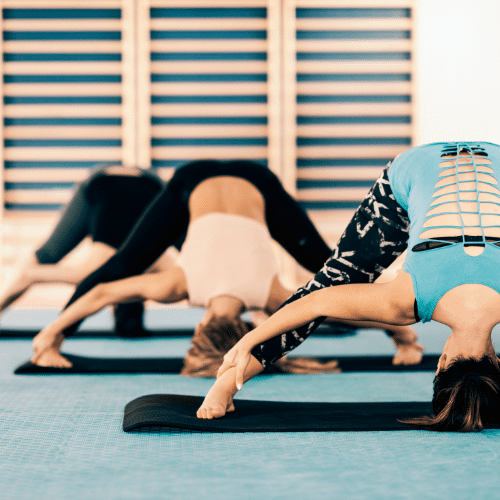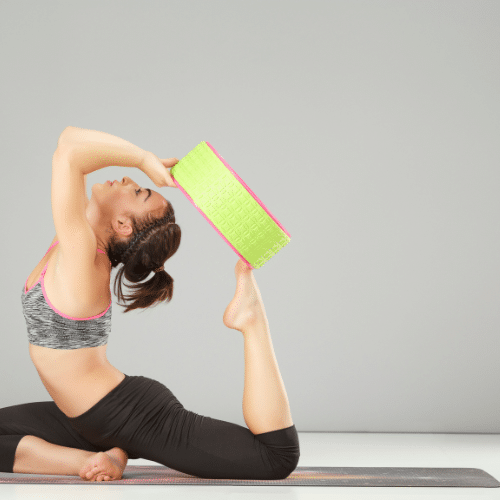Do you want to open your hips, improve your mental and emotional health, and gain more flexibility? Frog pose (Mandukasana) is the perfect pose for you! Let’s dive in and explore how Frog pose can help enhance your physical and mental well-being.
Benefits Of Practicing Frog Pose Regularly
1. Improves Hip Mobility & Eases Back Pain
Mandukasana is an effective pose for improving hip mobility and relieving back pain. This pose helps open the hips, which can become tight from sitting for extended periods, running, swimming, or cycling. The hip opener aspect of Frog Pose also helps reduce tension in the groin area. Additionally, this pose can increase circulation to the joints and strengthen your core muscles, making it beneficial for athletes looking to improve their performance.
2. Can Have A Positive Impact On Emotional & Mental Health
Frog Pose benefits the physical body and may also improve mental and emotional health. This yoga pose helps to create a sense of calm in the body and mind, which can help reduce anxiety, depression, and stress levels. Through practicing Frog Pose, you can focus on your breath and allow yourself to release any tension that may have built up in the body. Regular practice of this pose can also lead to improved concentration, clarity of thought, and increased self-awareness. Furthermore, incorporating mindfulness techniques into your practice can help you gain an even deeper connection with your body and mind. Give Frog Pose a try today and discover how it can help to improve your mental and emotional health!
3. Can Boost Circulation & Help Improve Blood Pressure
Mandukasana is an excellent pose to boost your circulation and help manage your blood pressure. This versatile pose helps to stretch the lower body, including the hips, thighs, and groin. By pushing these areas of the body, Frog Pose can help improve circulation in the legs, which can help reduce high blood pressure. This yoga pose also helps to stimulate areas of the body known for their ability to lower blood pressure. With the regular practice of Frog Pose, you may be able to manage your hypertension or high blood pressure levels effectively.
4. May improve occupational stress
Frog Pose is an outstanding yoga pose to practice if you’re looking to reduce occupational stress. This posture helps to stretch the lower body, including the hips, thighs, and groin. By stretching these areas of the body, Frog Pose may help reduce tension and fatigue in the legs, allowing for improved relaxation and mental clarity throughout your day. This pose can also help stimulate areas of the body known for their ability to reduce stress levels. With regular practice, you may be able to manage occupational stress more effectively. Give it a try today and see how it can benefit you!
Step-by-Step Instructions
Follow these steps for safe and effective practice:
- Begin in a tabletop position on your hands and knees with your palms underneath your shoulders and knees below the hips. Consider placing a yoga mat or blanket underneath you to help soften the pressure of your knees on the floor. Consider placing a yoga blanket on your mat for extra padding if you have sensitive knees.
- Press your heels together as if trying to hug them together and spread your knees apart until you feel a comfortable stretch in your hips. Make sure that you keep your back straight throughout this pose, pressing down on your elbows or using a yoga block for support as needed.
- Hold Frog Pose for 15-30 seconds while breathing deeply, then release back into tabletop position when finished. Repeat as needed!
Try These Frog Pose Variations To Prepare Your Hips
Frog Pose is a challenging posture that requires some practice to master. Before attempting the full pose, try some of these Frog Pose variations to help prepare your hips and thighs.
Cat/Cow: Begin on all fours with your wrists under your shoulders and your knees under your hips. As you inhale, drop your belly towards the mat and lift your gaze upwards for Cow Pose. Then, as you exhale, draw your belly in towards your spine and tuck your chin towards your chest for Cat Pose. Repeat this movement several times to warm up the spine and hip flexors.
Child’s Pose: From all fours, move back into Child’s Pose by sitting back onto your heels with a flat back and extended arms in front of you. This excellent restorative pose will help open the hips while stretching out any tightness in the lower body muscles.
Pigeon Pose: From Child’s Pose, slide one leg forward to form a triangle with the other leg behind it. Your front foot should be facing inward towards the opposite thigh, and the shin should be parallel to the top of the mat. You may feel an intense stretch on either side of this pose – stay here for 3-5 breaths before switching sides.
By practicing these variations before Frog Pose, you can ensure that you are adequately warmed up and prepared for deeper stretches in this posture.
Avoid These Frog Pose Mistakes & Improve Your Form
Frog Pose is an advanced yoga position that can be intimidating to some, but you can reap all its benefits with the proper form and practice. However, there are a few common mistakes to look out for if you want to perfect your Frog Pose.
First, ensure you are warmed up before attempting any frog pose, as tight muscles can lead to injury. Second, keep your feet parallel and hips open throughout the pose, so you don’t strain your lower back or hips. Thirdly, stay mindful of your breathing and avoid holding your breath during challenging poses like this one; it’s important to keep breathing deeply throughout the entire pose to get the most benefit. Lastly, make sure not to overstretch yourself by pushing too far – take it slow and listen to your body’s cues as you hold the pose.
Frog Pose can be a powerful tool in your yoga practice by focusing on your form and technique. Remember to take it slow, warm up properly and breathe deeply throughout the pose – if you do, you’ll soon reap all its benefits!


